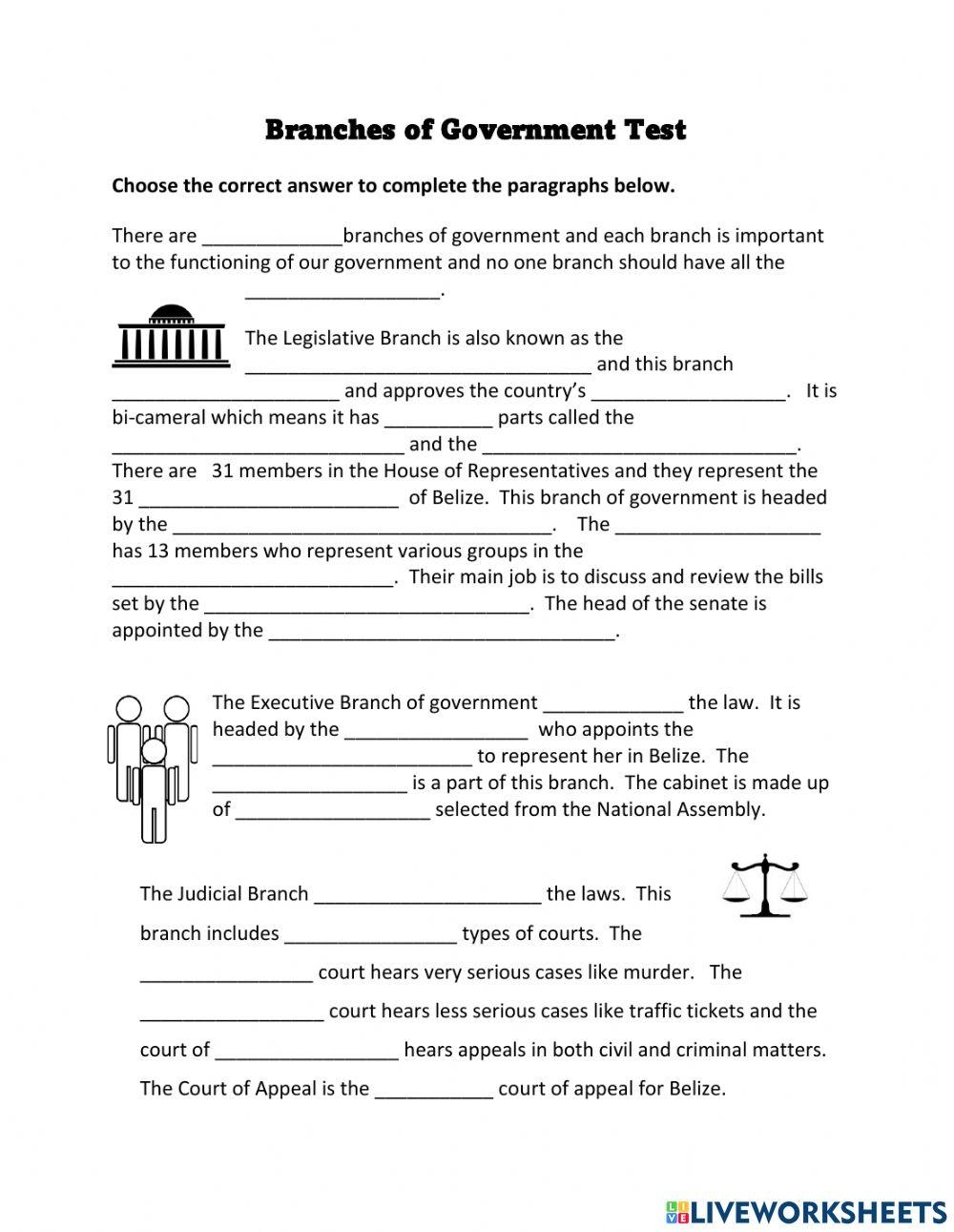The concept of separation of powers is a fundamental principle in the United States government, where power is divided among three branches: the legislative, executive, and judicial branches. This system ensures that not one branch has too much power and that each branch serves as a check on the others. Understanding the roles and functions of these three branches is essential for any citizen to comprehend how our government operates.
1. Legislative Branch: The legislative branch is responsible for making laws. It is comprised of Congress, which is divided into two chambers – the Senate and the House of Representatives. The main duties of the legislative branch include passing bills, approving budgets, and overseeing government agencies. Students can learn about the structure of Congress, the process of how a bill becomes a law, and the powers of the legislative branch through various activities and questions on the worksheet.
2. Executive Branch: The executive branch is headed by the President of the United States and includes departments and agencies that carry out and enforce laws. The President has the power to veto bills, appoint judges and officials, and serve as Commander-in-Chief of the military. The worksheet may include questions about the roles and responsibilities of the President, the Vice President, and the Cabinet, as well as the process of how a President is elected.
3. Judicial Branch: The judicial branch is responsible for interpreting laws and ensuring they are applied fairly and constitutionally. It is made up of the Supreme Court and lower federal courts. The Supreme Court has the power of judicial review, which allows it to declare laws unconstitutional. The worksheet can cover topics such as the structure of the federal court system, the selection and appointment of judges, and the landmark cases that have shaped our legal system.
By completing the Three Branches of Government worksheet, students can deepen their understanding of how our government functions and the roles played by each branch. It provides a hands-on approach to learning about the separation of powers and the system of checks and balances that are essential to maintaining a stable democracy.
In conclusion, the Three Branches of Government worksheet serves as a valuable educational tool for students to grasp the complexities of our government structure. By engaging with the material and completing the activities, students can develop a greater appreciation for the principles that guide our democracy and the importance of each branch in upholding the rule of law.
